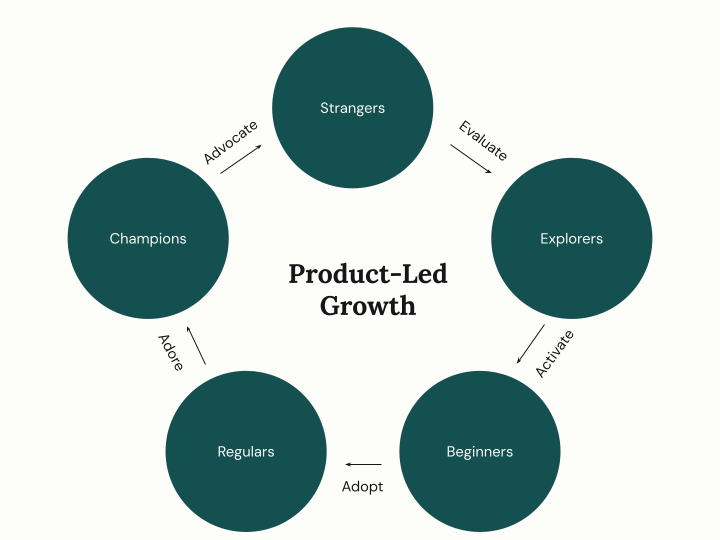
Over nearly two years, we worked closely with Ørsted’s Operations Team to enhance their product management approach, aligning it more closely with the company’s strategic goals. This involved addressing immediate operational issues and laying the foundation for sustained innovation and growth. This case study demonstrates the significant impact that interim product management can have on large-scale operational teams.
The Challenge
As Ørsted expanded in the offshore wind power sector, their offshore operations team grappled with an outdated product management approach. This structure struggled to ensure timely and relevant product deliveries to wind farms.

We partnered with Ørsted, a leading offshore wind power plant operator, to create a comprehensive digital product catalog that streamlines their operations and enhances their service offerings.
As part of this incredible growth journey the offshore operations team needed to restructure their product management organisation to ensure the delivery of relevant products.
The Challenge
As Ørsted expanded in the offshore wind power sector, their offshore operations team grappled with an outdated product management structure. This structure struggled to ensure timely and relevant product deliveries to wind farms.
The team needed to not only streamline product management but also define and strategize their offerings.
Additionally, aligning organizational dependencies and implementing lean portfolio management became imperative to enhance their services and maintain operational efficiency.
We helped streamline operations
We helped enhance their offerings
We developed a more focused strategy
Communication
AI
Roadmapping
We streamlined collaboration between ARTs / Departments.
In the early days at Ørsted, documentation and collaboration were lacking. There was a need for a more structured approach, one that enabled every team member to understand how their work fit into the larger picture.
At Ørsted the Operation’s Team has close proximity to the customer while other teams work further down the value chain. There existed a need for increased alignment and communication between different teams, especially between Operations and IT. To do this we established internal Service Level Agreements (SLAs) to formalize inter-team collaborations. We also enhanced vendor management for both internal and external vendors to streamline operations for the wind farms. We also developed a clear strategy and roadmap for vendors, including scheduled touchpoints for strategy alignment. In the end, we left Ørsted with a much clearer idea of each team’s end-to-end responsibilities for each service or product.
We leveraged AI to free up time for strategy.
We addressed the challenge of busy product owners, who were overwhelmed by the sheer number of tasks they had to manage. They were swamped with numerous responsibilities, from overseeing feature development to ensuring effective team collaboration. We leveraged ChatGPT to revolutionize their documentation process. By streamlining the documentation process, we freed up their time, allowing them to focus more on strategy and less on administrative tasks.
Enroll in our MasterClass: AI-Powered Product Management Here
We enhanced roadmapping capabilities and goal communication across teams.
Over the course of our work with Ørsted, we realized that we needed to simplify the feedback process to enhance strategy from stakeholders and wind farm owners. We wanted to align internal roadmaps not only to produce better products, but also to improve relationships with vendors.
We assisted Ørsted in developing clear, strategic roadmaps that aligned with their business goals and customer needs. Our focus was on ensuring these roadmaps were understandable to all stakeholders, regardless of their technical expertise. By clarifying the connection between short-term actions and long-term objectives, we helped Ørsted communicate more effectively with their teams and partners. The improved roadmaps facilitated better decision-making and prioritization, enabling Ørsted to allocate resources more efficiently and respond more quickly to market changes.

The Outcome: Enhanced Product Offerings and Sales
The culmination of our efforts at Ørsted was markedly visible in their enhanced product offerings and improved sales strategies. Our intervention led to the creation of a streamlined product portfolio, which significantly improved how Ørsted presented their services to wind farm owners.
By leveraging ChatGPT for document refinement, we transformed technical jargon into accessible, sales-friendly language. This not only made the catalog more relatable to non-technical stakeholders but also empowered Ørsted’s engineers, who were highly skilled but not traditionally sales-oriented.
The new product catalog bridged Ørsted’s advanced engineering capabilities with market needs. It facilitated clearer communication with potential clients, showcasing the tangible benefits of their offerings in a language that resonated with them.
The feedback from Ørsted and their clients was overwhelmingly positive. The clarity and effectiveness of the new sales materials led to better customer understanding and engagement, ultimately contributing to an uptick in sales and customer satisfaction.
Get in touch with Sebastian

FAQ
What is strategic product management and why is it crucial for large-scale companies?
Strategic product management involves aligning a company's product development with its overarching strategic goals. This approach is crucial for large-scale companies to effectively address market demands, navigate operational challenges, and foster continuous innovation and growth.
How does implementing SAFe (Scaled Agile Framework) benefit large organizations?
SAFe helps large organizations scale agile practices across various teams and departments, enhancing overall efficiency and collaboration. By adopting SAFe, companies can improve communication, manage dependencies more effectively, and align their strategic goals with day-to-day operations.
What common challenges do large organizations face when balancing agile methodologies with operational demands?
Many large organizations struggle with maintaining agility while meeting strict operational requirements. Challenges often include misalignment between different teams, difficulties in managing large-scale projects, and the inability to adapt quickly to market changes.
What role does product coaching play in the context of large organizations?
Product coaching is vital in helping large organizations bridge the gap between theoretical agile methodologies and their practical application. It ensures that teams understand and effectively implement agile practices, leading to improved operational efficiency and strategic alignment.
Why is enhancing collaboration between different departments crucial in large organizations?
Improved collaboration ensures that all departments and teams are working towards common goals, reducing silos and enhancing overall productivity. It is essential for managing inter-team dependencies and aligning various parts of the organization with the overall business strategy.
How can leveraging AI and automation tools like ChatGPT improve product management processes in large-scale companies?
AI and automation tools can streamline documentation and administrative processes, freeing up time for product managers and owners to focus on strategic initiatives. This technology helps in refining feature development, enhancing team collaboration, and improving overall operational efficiency.
What is the significance of developing clear and strategic roadmaps for large companies?
Clear and strategic roadmaps help companies outline short-term actions that align with long-term objectives, facilitating better decision-making, resource allocation, and market responsiveness. They also ensure that all stakeholders have a unified understanding of the company's direction and goals.
What outcomes can large organizations expect from improved product management practices?
By enhancing product management practices, large organizations can expect more coherent product offerings, effective sales strategies, and improved stakeholder communication. These improvements typically lead to higher customer satisfaction, increased sales, and a stronger competitive position in the market.







